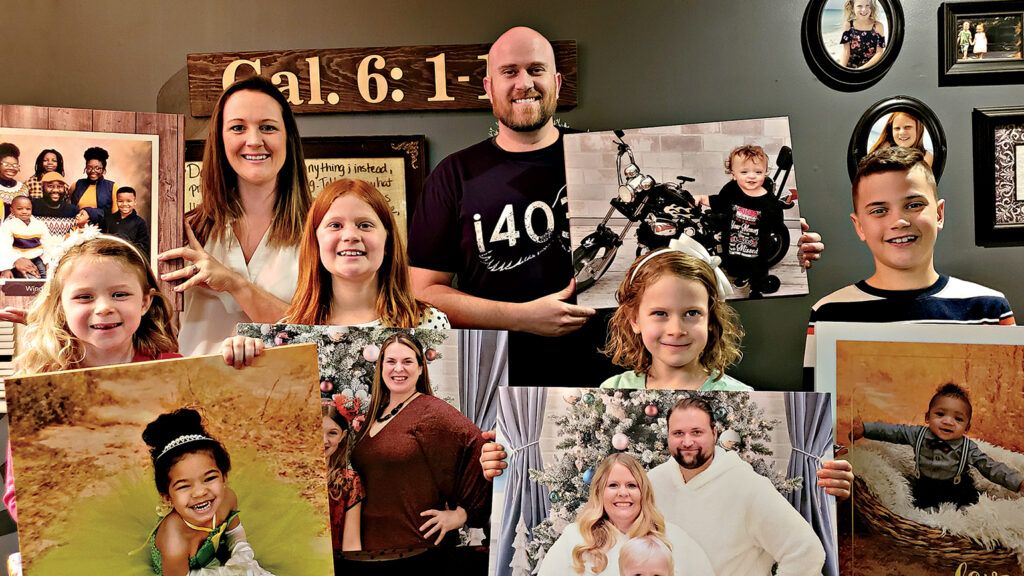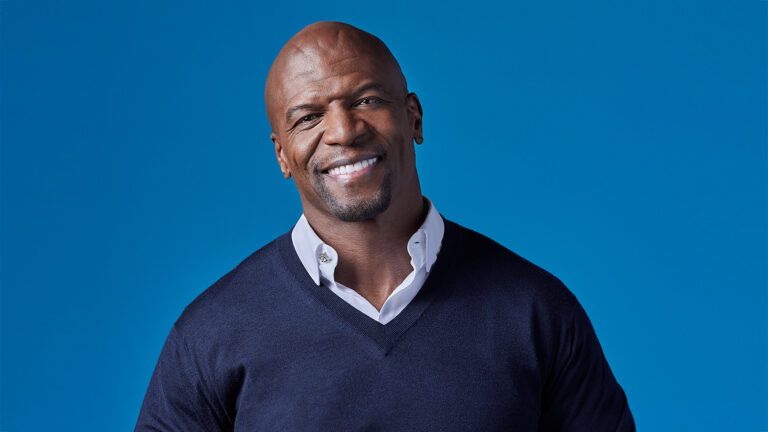I’m an architect. One of the services I perform is helping clients move into new office space. It’s a pretty routine assignment. I’ve gone into all kinds of spaces: shuttered restaurants, creaky old houses, shiny new office buildings.
Last year, a client was moving into a storefront at an outdoor mall. The space had formerly been occupied by a photography studio. Tenants vacating a rental don’t always do the best job cleaning up. I’ve seen some big messes, and usually a cleaning crew deals with it after I’m gone.
This studio looked as if it had been abruptly abandoned. All the photo-processing equipment was still there.
Piled against one wall was a huge stack of portraits wrapped in plastic. I picked up one. It was a beautiful family portrait printed on high-quality canvas. The packet included alternate takes and smaller prints. The entire order probably cost several hundred dollars.
Some of the photos had strips of tape with names, maybe a phone number. Employees must have been in the middle of processing those orders when the studio shut down. I looked around for paperwork, but there was none. What had happened here?
I gazed at the photo. A family, all dressed up, smiling. They’d put on their best clothes, come here to the studio, sat for the photos. A moment in time captured. A moment of life. There must be a hundred of these photos stacked against the walls.
I set the photo down. It was late. I wanted to get home to my wife, Dawn, and our four kids. I was here just to measure the space. The cleaning crew would toss out the photos along with everything else.
I stood there, picturing all those smiling faces crammed into a dumpster. The next moment, I was pulling out my phone and calling Dawn. What I was about to do would change our family’s life and the lives of so many people in those photos.
What I didn’t realize is that God had a lot more change in mind. Way more.
Two days later, after I got permission from the landlord, Dawn and the kids and I drove two minivans to the abandoned studio. We loaded armful after armful of photos into the vans.
“Daddy, there are a lot of photos!” said my 10-year-old son, Ephrem. He and his younger sisters—Amberleigh, Clora and Ivana—helped carry the photos and scampered around the store.
We had to fold down the back seats to fit everything.
“It’s more than I expected,” Dawn said when we got home. “We’ll have to put them in the basement. I wonder why the company just left them there.” “The landlord said the company had gone bankrupt and shut all its stores around the country,” I said.
We hauled the photos into the basement and stacked them against a wall. They looked even more daunting like that. How many had names and numbers? How many didn’t? And why had I decided this was such a great idea?
I looked up the company, a national chain. It had closed abruptly after a bankruptcy proceeding. The CEO vanished. There were news stories about customers around the country losing their portraits, calling phone numbers that no longer worked. How horrible!
I imagined what it would feel like to lose a treasured family portrait like the ones now in my basement. It wasn’t a life-altering problem. But I knew all about the power of small gestures to give someone a welcome shot of hope.
It had been nine years since I’d lost my previous architectural job during the recession. The firm I worked for did multiple rounds of layoffs before going out of business. Ephrem and Amberleigh were babies back then. Dawn and I had just bought our house.
The Bononis had been hard workers and good providers ever since my great-grandparents had immigrated from Italy and opened a grocery store in St. Louis.
My dad still ran that store. Was I going to be the first Bononi to fail his family?
For nearly four years, I scrambled. I took temporary architectural assignments, helped my parents at the store, worked in a warehouse, designed T-shirt logos.
I collected unemployment and did weekend shifts with the National Guard to get health insurance. I never missed a mortgage payment, but we had to go to food pantries. Many nights, I went to bed ashamed and frightened.
It was during one of our food pantry visits that I realized I had been ignoring God ever since the layoff. My wounded pride had stifled my prayers. Was it shameful to go to a food pantry? I thought so.
Yet the pantry was a provision from God. By no means his only provision. Looking back, I could see that every time a temporary assignment ended, I made a connection that led to more work.
Those nudges from God added up. I decided I wanted to be someone who helped make such moments happen.
The kids helped me sort and alphabetize the photos. There were 105, plus some printed mugs and albums. We made a spreadsheet of names and whatever contact information we could find.
We sent a group text message explaining who we were and how we had found the photos, inviting people to set up a time to collect them. The kids made sure I added, “This is not a scam!”
People began arriving at the house. The kids would race each other to the door to hand over the portraits. There were smiles, waves, looks of happy puzzlement. But it was only a few people.
I had sent the message through a Google service that disguised my phone number to avoid spreading my personal information. Google thought I was sending spam and shut down the text message before it reached everyone. Other people probably did think it was a scam.
“Try social media,” said the kids.
I posted a message to a community board on Facebook with my name, email address and phone number. No way around giving out my personal information.
The phone rang. And rang. E-mails poured in. Something about seeing my name and my picture on Facebook must have convinced people this was for real. The post was shared 209 times.
Local TV news stations sent camera crews. The story aired that night, and even more people called and e-mailed.
We scheduled an open house. Clora and Ivana were our welcome crew, bouncing up and down with excited “hellos!” to everyone. Ephrem and Amberleigh were couriers, running down to the basement to retrieve photos.
People shared their stories. One woman told us her photos contained the first portrait of her family with a newly adopted child. “We were devastated when the store closed. We’d given up. I can’t thank you enough.”
A woman named Laurice Martin broke down in tears when she saw the portrait of her big extended family. Nearly two dozen relatives had gathered for the picture, a tribute to one of Laurice’s daughters, who was about to start chemotherapy.
“Do you know how hard it was to get us all together and how much it meant to my daughter to see everyone all dressed up? Oh, you have blessed my family today!”
Somehow ABC World News Tonight heard about our project, then did a follow-up segment when they heard about Laurice. After that, I couldn’t keep up with the flood of e-mails and letters.
People from all over the nation wrote to thank me for what I’d done. “Just hearing about this brightened my whole day.” “I’m struggling right now, but hearing about this confirmed what I know from the Bible. God is good. Thank you.”
Dawn and the kids and I were overwhelmed. Our efforts were so small and ordinary, but they had become a symbol of hope for people we would never meet.
The coronavirus pandemic temporarily halted our project. When lockdown eased, we resumed reuniting people with photos, doing socially distanced handoffs. We were able to return more than 60 of the 105 photos.
I’m not discouraged. Recently, I made what I called a “coincidence chart,” a diagram of all the chance encounters, friendships, mentors and unexpected connections that have helped me in my life, even when I was laid off.
I should have called it the “God at work” chart. God gives a small gesture the power to change someone’s life.
For more inspiring stories, subscribe to Guideposts magazine.




